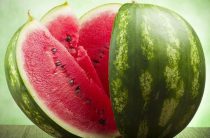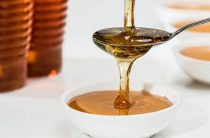Allergy to buckwheat is a fairly rare occurrence. However, it can still occur in both children and adults. The occurrence of such a reaction is facilitated by a failure in the human immune system, as well as the inclusion of dishes containing buckwheat in the diet. An allergy can appear immediately after eating buckwheat, or after a short period of time (for example, the next day or after several hours). The later it is possible to identify the presence of an ailment, the more difficult it will be to determine the exact risk factor, that is, the allergen itself.
There are times when a child has an allergic reaction, and parents suggest the development of more serious diseases. For example, they may think that individual intolerance to certain components of the food they eat, poisoning, etc. are to blame. therefore, it is important to remember that any signs of an allergy should be the reason for an immediate visit to the doctor.
Allergy to buckwheat: causes
Buckwheat is a very useful product, as it contains more minerals, vitamins, fiber, protein, and other components necessary for the normal functioning of the human body. Usually, an allergic reaction occurs due to exposure to gluten. But in buckwheat, unlike other cereals, it is present in minimal amounts, therefore it is not able to become a risk factor for this disease. In this case, proteins (proteins), for example, prolamins, albumins, and also globulins, can be to blame for everything. The immune system perceives the protein as a foreign body, and therefore begins to react negatively to it, provoking the appearance of characteristic symptoms of the disease.
Buckwheat is a very dangerous product for babies. It can be included in the diet of crumbs only after special tests have been carried out to identify allergies, which will confirm its absence. The reason for such a negative reaction of the body to buckwheat can also be a pillow consisting of buckwheat husk inside. Hypersensitivity to this product can be observed in those who include milk, beef, kiwi in the diet. Here it is specifically about cross-allergy to buckwheat. The substances that cause this type of allergy are very similar in structure. As a result, there is not a very adequate reaction of the body's defenses to such products.
In some cases, an allergy to buckwheat can occur due to non-compliance with the rules for transporting and storing cereals. In addition, you need to know that one of the most powerful allergens is mold that occurs on cereals. Among the popular factors provoking an allergy to buckwheat may be:
- Eating too much grains.
- A very sharp introduction of complementary foods, if we talk about an allergic reaction in babies.
- Genetic factor (if at least one of the parents is allergic to this product).
An allergic reaction to this type of cereal can occur not only in young children, but in adults. A similar disease can overtake animals. Veterinarians have repeatedly noted such cases in dogs after eating buckwheat.
Main symptoms
The main signs of the disease in children include a rash on the skin, tearing, redness of the eyes, worsening sleep, and the functioning of the gastrointestinal tract.
It is important to know that many formulas for artificial feeding contain buckwheat. For this reason, any of the new products should be introduced into the baby's diet gradually, with great care. After introducing a small amount of a new product, it is imperative to monitor the body's reaction to it. In adult children, headaches, allergic conjunctivitis, and urticaria may occur. Now it is worth considering the picture of the disease in adults. An allergy to buckwheat in them is manifested by itching, swelling, burning, redness of the lips. In addition, patients will be disturbed by urticaria, swelling, bouts of vomiting, and abdominal pain. Typically, such an allergic reaction is accompanied by shortness of breath, shortness of breath.
Survey
Consider what is the diagnosis of the disease? First of all, it consists of a physical examination, a clinical history of the patient. If we are talking about a patient prone to allergies, various methods of allergological examination are used. They mean by themselves skin tests, tests for antibodies of immunoglobulin E to a variety of food products that provoke the disease. In addition, patients are prescribed special provocative tests, elimination nutrition (diets that involve the exclusion of certain foods from the diet). Due to the ever-increasing number of people with allergies, doctors have to use different ways to detect cross-reactions. They are identified in different ways:
- between non-food (pollen, dust, drugs) and food allergens;
- between various food allergens.
Allergy to buckwheat: treatment of children
Treatment of young children in the first place is to give up buckwheat, do not include it in the diet. If these are infants, then you need to replace the feeding mixtures, use those that do not contain this product. Moms during lactation should stop eating buckwheat. In order to somewhat muffle the unpleasant symptoms of allergies, for example, hives, itching, relieve redness, you can resort to the use of the drug Fenistil. This remedy is applied to damaged areas of the skin. In addition, antihistamines come to the rescue. They should be prescribed only by the attending doctor, especially when it comes to babies. The pediatric allergist is obliged to determine specific risk factors for the child, to prescribe a set of measures to prevent their influence.
Very often, a mother's allergy to buckwheat or other foods is confused with an allergic reaction to milk. After all, milk itself is a fairly powerful allergen. Mothers begin to feed the child with special dairy-free cereals, which are hypoallergenic. But even after taking such measures, they do not notice any improvements. Therefore, it must be remembered that the body of each person is a separate mechanism that requires an individual approach. Very often, adults and children suffering from this disease do not respond even to the most popular allergens. But they react to buckwheat.
How to cure allergies in adults?
For treatment, the doctor prescribes antihistamines.
They are used in case of mild symptoms. Popular effective remedies are Zirtek, Suprastin, Zodak, Tavegil. Specific doses, duration of therapy are also set by a specialist. At the heart of all antihistamine drugs there are similar active ingredients. Such drugs have similar pharmacological properties. Therapy is recommended to continue until the symptoms disappear completely. A prerequisite during and after it will be a complete rejection of buckwheat, other products that provoke a cross-reaction. Often, all drugs used against allergies have several side effects.
These include the state of drowsiness, lethargy. If the disease is manifested by respiratory problems, the doctor may prescribe some other drugs. Basically, it is enough that the allergen is completely excluded from the diet, and the patient also takes antihistamines.
Treatment with folk remedies
In addition to modern medicines, to improve the condition, reduce symptoms, doctors may prescribe the use of alternative methods. With an allergy to buckwheat, therapy with string, chamomile, eggshell, celandine is possible in the absence of contraindications, individual intolerance.
Chamomile decoction
Chamomile is an excellent remedy to get rid of the unpleasant symptoms of allergies.
First you need to boil water, then pour 1 tbsp into a jar or other convenient container. chamomile, pour 200 ml of this boiling water over it. It is recommended to infuse the product for 30 minutes, then strain. Tincture is taken 3 times a day, regardless of meals.
Treatment by succession
You need to take 2 tbsp. of this herb, pour 500 ml of boiling water over it. The remedy is infused for 30 minutes. In the absence of an allergy to honey, it is allowed to add 1 tsp to sweeten the medicine a little, to make it taste more pleasant.
Eggshell for buckwheat allergy
It is necessary to separate the shell from the film located inside, dry it thoroughly. Then you should take a coffee grinder, grind the shell with it. Use one pinch of the resulting powdered medicine after eating.
Recipe based on celandine
With celandine, you need to be extremely careful, because its use in large quantities is toxic to the human body. But you can treat allergic reactions with it. You will need to take chopped celandine - 1 tablespoon, pour 400 ml of boiling water. After the remedy is infused, you need to strain it, drink it twice a day - in the morning and in the evening, a quarter cup (that is, 50 ml each).
Recommendations
It is important to remember that self-medication is life-threatening. Therefore, if any symptoms of an allergy to buckwheat, other products, substances appear, you should consult a doctor. Patients are shown special dietary nutrition, timely detection of allergens and diagnosis. Allergy is most often a hereditary disease. It's hard enough to fight him. We advise you to follow all the recommendations of a specialist, to protect yourself to the maximum from certain allergens. Be healthy!










